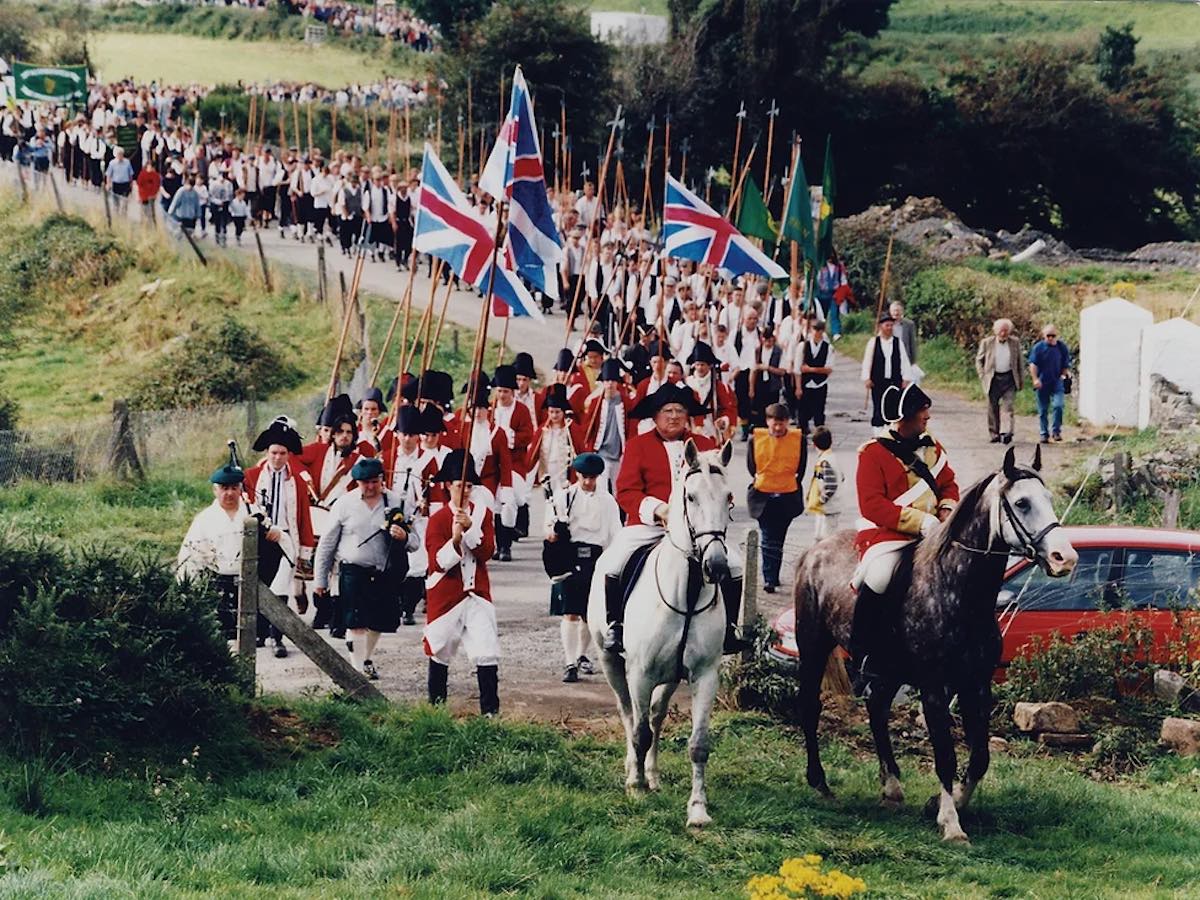
An upcoming festival will see hundreds take part in a re-enactment of one of the most important clashes to have occurred during the 1798 United Irishmen rebellion.
The 225th anniversary commemoration of the Battle of Ballinamuck starts on Thursday in County Longford, kicking off four days of events centred around a bloody clash that would signal the end of the United Irishmen’s bid to be free of British rule.
The battle saw United Irishmen and French allies led by General Humbert face off against British troops on September 8, 1798, two months after one of the rebellion leaders, Henry Joy McCracken, was executed in Belfast.
It was the last major engagement of the 1798 rebellion. Twelve days earlier, with 1,100 French troops and 1,500 Irish, Humbert had beaten a much larger force under British General Lake at Castlebar.
With Lake in pursuit, joined by Lord Cornwallis’ 20,000 troops from Dublin, he tried to join up with surviving rebel forces. After an overnight chase, Lake caught up with him in County Longford.
Humbert had planned to join forces with 3,000 United Irishmen he believed to be near Granard. On the night of September 7th they stopped at Cloone for four hours’ rest. Lord Cornwallis marched to Ballinalee, to cut them off, sending orders to General Lake to attack from the rear. Lake’s advance guard arrived in Cloone, to discover that the French had left only an hour before.
Humbert’s men were spread out along the road. While Humbert waited for them in Ballinamuck, his rearguard of 200 men, under Gen. Sarrazin, surrendered after a brief skirmish at Kiltycrevagh (Croppies Gap).
Humbert moved up Shanmullagh Hill with 400 men, while General Blake with a battalion of pikemen and a company of French grenadiers under Capt.
Jobit took up position along the road. Jobit ordered his grenadiers to attack across the bog, but they sank into it and were forced to surrender.
General Lake now arrived in the valley with large forces and attacked the left flank of Shanmullagh Hill.
This was repeatedly repelled by a detachment of pikemen. Meanwhile, Lake sent a large detachment of cavalry and infantry around the hill, undercover to attack Humbert from the rear. Humbert was surprised by cannon fire followed by a cavalry charge and forced to surrender in minutes.
On the roadway, cannon fire was exchanged, and Lake’s cavalry were repulsed repeatedly by Blake’s pikemen and Magee’s cannon. Blake led his men along the foot of Shanmullagh Hill for a flank attack on the road, but when he got there, Humbert had surrendered.
The rebels fought with the courage of desperation, as they realised that they were to be shown no mercy. Many fled into the bog , where the cavalry could not follow, but they were surrounded by muskets and slaughtered.
The Irish battalions on the top of the hill watched, as the French were treated with all the civilities of a formal surrender but were themselves then set upon and slaughtered without mercy. Five hundred are believed to have been buried in mass graves on the hill.
This Saturday will see the battle re-enacted in Ballinamuck by hundreds of participants in period costume, with visitors able to watch the event and also visit a ‘living history’ campsite based on where troops waited amid tents on the eve of the clash.
Other events to take place during the commemoration festival include a family fun day, guided history tours, poetry and storytelling workshops, and demonstrations of blacksmith forging.
A re-enactment of a famous Gaelic football match in 1898 between the Ballinamuck Kickers and Mullahoran Dreadnoughts will also take place, with the involvement of local GAA clubs.
Ahead of Saturday’s re-enactment, a recreation of the march to battle by troops will take place.
A commemoration spokesperson said: “The march, which is approximately 8km in length, takes place to signify and remember that fatal day when General Humbert marched his men from Cloone in 1798.
“They marched with such bravery to support the Irish in the Battle of Ballinamuck.”
This reenactment march will include horses, uniformed personnel, carts and all who wish to take part. All who wish to participate must register through the link on www.battleofballinamuck.ie as buses will transfer people to the site on the day.
The march is also a chance to be dressed in period costume too and commemoration organisers are urging as many people as possible to log on to the website for information on the costume requirements so that the enactment looks as authentic as possible.
![[Irish Republican News]](https://republican-news.org/graphics/title_gifs/rn.gif)
![[Irish Republican News]](https://republican-news.org/graphics/title_gifs/harp.gif)

